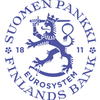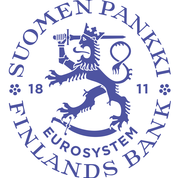Economic crises have expanded the frontiers of monetary policy implementation

The normal functioning of the economy hinges on smooth financial intermediation. During economic crises the flow of finance risks being impeded by uncertainty, and the central bank's role as a guarantor of financial intermediation is emphasised. The operations of euro area central banks already underwent change during the global financial crisis and the European sovereign debt crisis, as the scope for monetary policy implementation was expanded. New instruments comprised targeted longer-term loans to banks, large-scale asset purchases, and forward guidance. ‘Crisis situations emphasise the benefits of cooperation. As part of the euro area, Finnish banks and financial markets have access to the same funding channels at similar requirements as other entities in the area,’ stated Dr Tuomas Välimäki, Member of the Board of the Bank of Finland.
The onset of coronavirus pandemic in the spring of 2020 has prompted the Eurosystem to further explore the implementation of monetary policy in ways that have mitigated economic decline and market turbulence. ‘In crisis situations it is the task of the central bank to act decisively to safeguard price stability and to enhance growth and employment,’ stressed Dr Välimäki.
By purchasing assets, the Eurosystem increases the amount of liquidity in the financial system and lowers interest rates in bond markets. This eases financing costs for firms, banks, sovereigns and, ultimately, households. This is currently required by the weak outlook for economic activity and inflation. The Bank of Finland has purchased EUR 57 billion of assets through monetary policy operations. Out of the total, almost EUR 30 billion are assets purchased under the public sector purchase programme. In addition, slightly over EUR 7 billion worth of assets have been purchased under the pandemic emergency purchase programme. The majority of the assets purchased under both programmes are Finnish sovereign bonds. Under these programmes the Eurosystem's national central banks purchase bonds issued by their domestic sovereigns and assume any associated risk.
Financing conditions have also been eased with liquidity provision to banks operating in Finland. In response to the coronavirus pandemic, the Eurosystem further lowered the interest rates on its targeted loans in the spring. ‘By offering central bank funding at exceptionally affordable rates we are able to facilitate bank lending to Finnish businesses and households during the pandemic. Banks’ take-up of central bank funding has been record-high,’ noted Dr Välimäki.
Central bank collateral policy is aimed at supporting the objectives of monetary policy, financial stability and the functioning of markets. By easing its collateral requirements during the coronavirus pandemic, the Eurosystem has ensured that banks continue lending to the real economy. ‘Guaranteeing the sufficiency of collateral enables banks to make full use of the Eurosystem's long-term and low-interest rate refinancing operations. In addition to the common Eurosystem collateral easing measures, the Bank of Finland will adopt its own additional credit claim framework as from September 2020. This will support continued bank lending especially to firms that have been buffeted by the pandemic,’ stated Dr Välimäki.
In the early stages of the coronavirus pandemic the Bank of Finland also supported financial intermediation with its investment activities. The central bank's purchases of commercial paper were able to stabilise these domestic markets in an environment where other investors had retreated. ‘The Bank of Finland's purchases of domestic commercial paper helped in stabilising market activity and eased the pressure put on bank lending to firms,’ noted Dr Välimäki.
Keywords
Images
Links
About Suomen Pankki
The Bank of Finland is the national monetary authority and central bank of Finland. At the same time, it is also a part of the Eurosystem, which is responsible for monetary policy and other central bank tasks in the euro area and administers use of the world’s second largest currency – the euro.
Subscribe to releases from Suomen Pankki
Subscribe to all the latest releases from Suomen Pankki by registering your e-mail address below. You can unsubscribe at any time.
Latest releases from Suomen Pankki
Referensränta och dröjsmålsräntor enligt räntelagen för tiden 1.1–30.6.202622.12.2025 13:30:00 EET | Pressmeddelande
Referensräntan enligt 12 § i räntelagen (633/1982) är 2,5 % för tiden 1.1–30.6.2026. Dröjsmålsräntan för denna period är 9,5 % per år (referensräntan med tillägg för sju procentenheter enligt 4 § i räntelagen). Den dröjsmålsränta som tillämpas i kommersiella avtal är 10,5 % per år (referensräntan med tillägg för åtta procentenheter enligt 4 a § i räntelagen).
Korkolain mukainen viitekorko ja viivästyskorot 1.1.–30.6.202622.12.2025 13:30:00 EET | Tiedote
Korkolain (633/1982) 12 §:n mukainen viitekorko ajanjaksona 1.1.–30.6.2026 on 2,5 %. Viivästyskorko tänä ajanjaksona on 9,5 % vuodessa (viitekorko lisättynä korkolain 4 §:n mukaisella 7 prosenttiyksikön lisäkorolla). Kaupallisiin sopimuksiin sovellettavaksi tarkoitettu viivästyskorko on 10,5 % vuodessa (viitekorko lisättynä korkolain 4 a §:n mukaisella 8 prosenttiyksikön lisäkorolla).
Reference rate and penalty interest rates for 1 January – 30 June 202622.12.2025 13:30:00 EET | Press release
The reference rate under section 12 of the Interest Act (633/1982) for the period 1 January – 30 June 2026 is 2.5 %. The penalty interest rate for the same period is 9.5 % pa (under section 4 of the Act, the reference rate plus seven percentage points). The penalty interest rate applicable to commercial contracts is 10.5 % pa (under section 4 a of the Act, the reference rate plus eight percentage points).
Det är inte läge att skjuta upp lösningarna för Finlands offentliga finanser19.12.2025 11:00:00 EET | Pressmeddelande
Finlands offentliga finanser befinner sig alltjämt långt från balans. För att vända skuldsättningsutvecklingen krävs en betydande konsolidering av de offentliga finanserna och investeringar i tillväxt. Höjningen av de nödvändiga försvarsutgifterna försvårar den offentligfinansiella konsolideringen. Inflationen i euroområdet ligger på målet och ekonomin har vuxit något snabbare än förutsett.
Suomen julkisen talouden ratkaisuja ei kannata lykätä19.12.2025 11:00:00 EET | Tiedote
Suomen julkinen talous on edelleen kaukana tasapainosta. Velkaantumiskehityksen kääntäminen vaatii merkittävää julkisen talouden sopeuttamista ja investointeja kasvuun. Välttämättömien puolustusmenojen kasvattaminen vaikeuttaa tasapainottamista. Euroalueella inflaatio on tavoitteessa ja talous on kasvanut hieman ennustettua paremmin.
In our pressroom you can read all our latest releases, find our press contacts, images, documents and other relevant information about us.
Visit our pressroom

